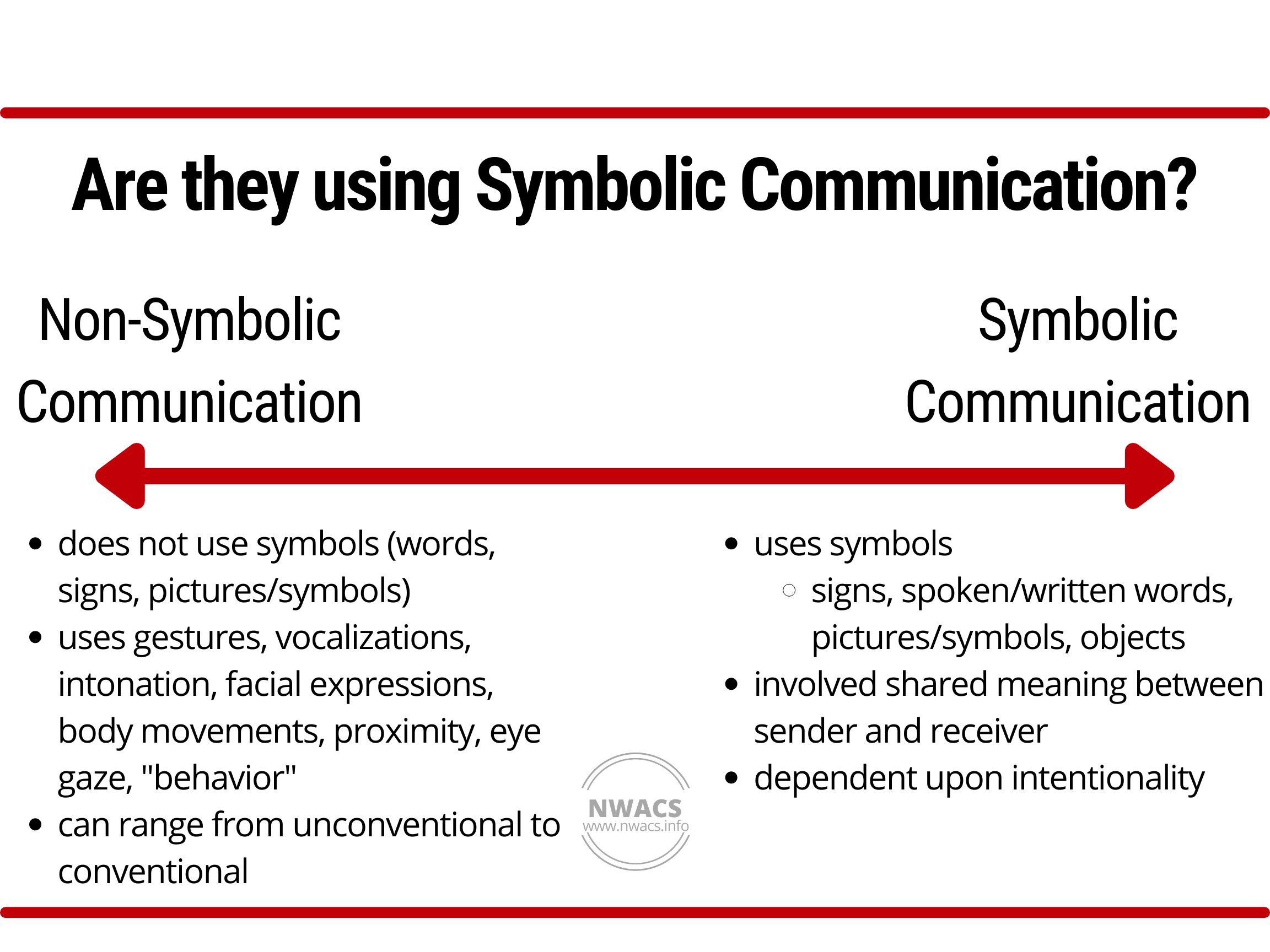Communication Ability Levels
Continuum of Communication Independence (based on the work of Patricia Dowden, PhD, CCC-SLP)
Ability levels is a way to describe the communication skills of a person. This model can help us identify goals and needed supports for the person.
We all start at birth as emergent communicators. Children with complex communication needs may stay at this level longer. Our focus is helping them develop as much communication autonomy as possible.
Some adults who were independent communicators lose some or all of their communication abilities. This can be from a traumatic brain injury, stroke, or progressive disease (such as ALS or dementia). Our focus is helping these people get back or keep their communication independence or autonomy as much as possible, for as long as possible.
Emergent Communicator
An emergent communicator is a person of any age who does not have a reliable means of expressive communication using symbolic communication. This is a person who:
uses non-symbolic methods of communication such as: facial expressions, body language, gestures, vocalizations, and other behaviors which are usually unique to them and not immediately understandable by unfamiliar communication partners
is limited to topics in the “here and now”
might be trialing AAC, but their interaction with it is inconsistent; communication partners might be modeling AAC without expectation
Emergent communicators are communicating. We need to be good detectives and smart partners. Being an emerging communicator is not related to the person’s cognitive ability, receptive language, or their potential. It just means that they do not yet have the tools to communicate beyond the “here and now”.
A good goal for emerging communicators is to buildup their non-symbolic communication, grow their multimodal communication, and to figure out a first method of symbolic communication.
Context-Dependent Communicator
A context-dependent communicator is a person of any age who has reliable symbolic communication, but is limited to specific contexts or communication partners. This is a person who:
has limited vocabulary
is limited to familiar communication partners and/or
is limited to certain contexts (e.g., environments, activities, topics)
Being a context-dependent communicator is not related to the person’s cognitive ability, receptive language, or their potential.
A good goal for context-dependent communicators is to expand their vocabulary, their pool of communication partners, and the contexts in which they can communicate.
Independent Communicator
An independent communicator is a person who can communicate when, where, why, and to whom they want about anything they want. This is a person who can:
create novel messages
spell new words “well enough”
use a variety of communication modes
use strategies to facilitate effective and efficient communication
A good goal for independent communicators is whatever their goals are for improved communication.
References:
Continuum of Communication Independence, by Patricia Dowden
AAC User Abilities: AAC Ability Levels, RAST Resources



